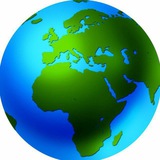tg-me.com/mapping_upsc_prelims/41
Last Update:
🔆WATER RESOURCE MANAGEMENT ISSUES AND CONCERNS IN INDIA
✅Day Zero: The day when a city’s taps dry out and people have to stand in line to collect a daily quota of water.
✅For the first time in human history, human use and pollution of freshwater have reached a level where water scarcity will potentially limit food production, ecosystem function, and urban supply in the decades to come.
✅Chennai, one of India’s major cities facing an acute, unprecedented water shortage and witnessing urban floods alternately. According to NITI Aayog’s recent assessment Many other big cities, including the national capital Delhi, are likely to run out of groundwater by 2020.
▪️Why is Water Resource Management the need of the hour?
✅The Niti Aayog report has warned that by 2030, 40 percent of India’s population will be deprived of access to clean drinking water.
✅ Further, as per the NITI Aayog’s Composite Water Management Index (2019), 75 percent of households in India do not have access to drinking water on their premises.
✅India ranks 120th amongst 122 countries in the water quality index.
✅ It becomes important to understand issues surrounding the effective management of water so as to reduce human miseries.
▪️Basic facts to begin the answer.
✅India has only about 4 percent of the world’s renewable water resources but is home to nearly 18 percent of the world’s population.
✅India witnesses’ floods and droughts at the same time in different parts of the country. This leads to a situation
of Deluge here droughts there.
✅85% of the precipitation in India comes from the South - West Monsoon which is concentrated over the period of four months from June to September.
▪️Issues with water resources
✅Depletion of Groundwater:
🔸 More Exploitation than recharge: The annual withdrawal of groundwater in India far exceeds the annual recharging of it.
🔸High dependence on groundwater: It caters to about 85 percent of rural demand, 50 percent urban requirements, and more than 60 percent of our irrigation needs.
🔸Unregulated extraction: It has led to overuse in many parts of the country, causing the groundwater table to plummet, drying springs and aquifers.
🔸Lack of Agro-climatic planning: water-guzzling crops and heavy use of fertilizers have both contributed to Punjab's water crisis depleting groundwater resources.
✅Impact of water scarcity on Economic Growth: By 2030, the country’s water demand is projected to be twice the available supply, implying severe water scarcity for hundreds of millions of people and an eventual 6% loss in the country’s GDP.
#mains
Source - OnlyIAS
BY Mapping
Warning: Undefined variable $i in /var/www/tg-me/post.php on line 283
Share with your friend now:
tg-me.com/mapping_upsc_prelims/41
